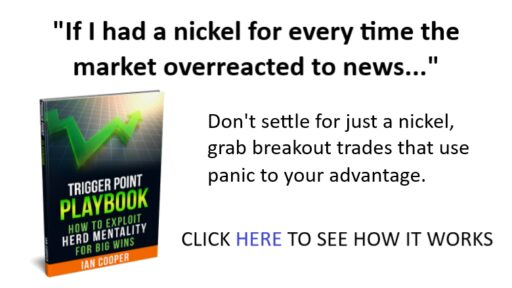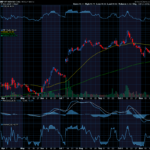by Dan Keen
Sometimes a stock price may drop significantly before you have time to catch it and react. The best choice in this situation may be to continue writing covered calls but with lower strike prices than you would like, and to get a decent premium.
Suppose you bought 100 shares of a stock at $14. You wrote a covered call for $15 with an expiration date of the next month. Then the stock suddenly takes a plunge to $12, and settles there. When your option expires, you surely will not be called out. However, you won’t be able to write a covered call at $15 for the next month, because the stock price is so far away from the strike price, the premium would be too low, and probably not even cover the cost of commission. In this situation, reevaluate the company and the market. Examine the news. If it appears that the stock will be a while recovering, you may want to take a little risk and write a covered call with a lower strike price, in this case, $12.50 would be the next price above the stock price. This is risky, because you do not want to be called out, or you would lose the money. Selling the stock at $12.50 when you paid $14 would hurt! In this case, you would have to monitor the stock price more closely, and if it goes beyond $12.50, buy back the option you sold (“buy to close” your position). You would lose some money, because you would encounter another commission fee and the cost to buy the option back could be higher than the price you were paid when you sold it. But, it still may be cheaper. Do the math to ensure the smaller loss. If you do sell a call at a lower strike price and don’t get called out, do it again and again. Even if the stock never climbs back up to $14, you may eventually make enough by continually writing covered calls to break even, and possibly still come out profitable.

For a period of time, we were continually writing calls on Galileo Technology (GALT), which dropped in price after we purchased it. Galileo was one of the semiconductors industry’s fastest growing suppliers of integrated circuit devices for communications. Let me provide an example. On December 21, 1999 we purchased 100 shares of GALT at $22.375 per share plus a commission of $7.95 for a total cost of $2,245.45. The stock price was close to the next higher option strike price, namely $22.50. Although it was a good company, and one that we didn’t mind having in our portfolio, our intention was to get called out and make a quick turn over of cash. So, we wrote a covered call for January with a $22.50 strike price, and received a premium of $178.79 after commission. That’s about an 8% return in four weeks… very nice!
The stock did indeed go up, but then by the time the third Friday in January arrived, the stock was below the strike price, and we were not called out. The stock was still hovering around $22 so we wrote another covered call for March, again with a $22.50 strike price. After commission, that generated another $166.29.
The stock had some up and down volatility, but by the March expiration date the stock was still bouncing around $20 to $21. The stock was now below our original purchase price, so we didn’t want to sell it. After examining the options for the next month, we calculated we could make $97.54 and still maintain a $22.50 strike price, so we wrote the call.
By April, GALT had inched down even more, and was now trading between $14 and $18. It was time to reevaluate. What if we sell the stock when it hits $18 and terminate the play? We made $442.62 so far writing calls and would get $1,800 (less $7.95 commission = $1,792.05) for a total income of $2,234.67. We paid $2,245.45 to buy the stock. That would give us a loss of $10.78. So, we certainly did not want to sell the stock unless the company’s fundamentals took a dramatic negative turn. But we still liked the company, which posted an earnings increase in April of 33%.
With the stock far below $22.50, we had to select a lower strike price in order to make any money at all writing the call. The stock market as a whole was in a correction at that time, so we felt it was safe to pick a lower strike price and pick an expiration date of two months out instead of one so as to grab as much premium as we could under those circumstances. We chose a strike price of $20 with an expiration of June, two months out, yielding another $72.54. It was not our intention to be called out at $20, should the stock make a recovery, so we were sure to monitor the stock daily. However, if we did get bought out at $20, we would have come out profitable. Our intention was to continue writing covered calls on this stock, accumulating premium.
Always do as much homework as you can on any company you buy to reduce the risk of the stock dropping while you have a covered call on it. But when a stock drops, our choices are to:
- Buy back the call and sell the underlying stock.
- Sit patiently and hope the stock bounces back up.
- Write a covered call going out one or two months but with a lower strike price to receive a bigger premium. But the stock must be monitored and the call bought back if the stock goes above the strike price, since we do not want to be called out at a price lower than we purchased the stock.











Recent Comments